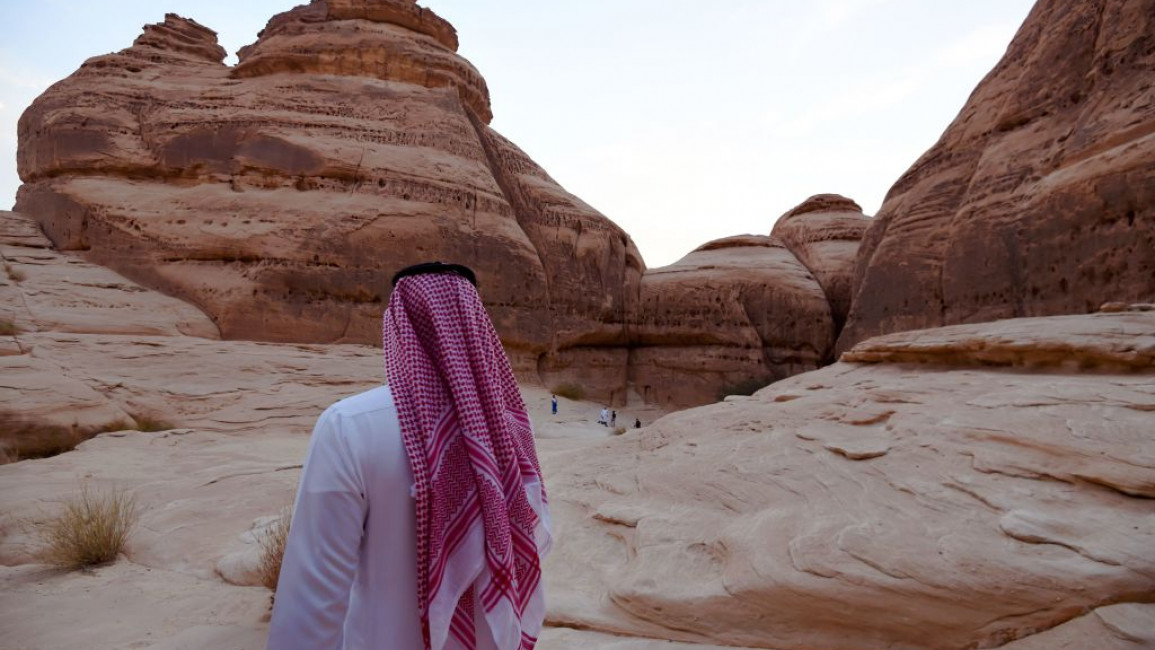
The MENA’s growing tourism sector is widening inequalities
Tourism in the Middle East as a significant economic sector has continued to grow in the recent period. It has been a key asset for economic growth in the wealthier countries, and for those suffering from economic crises, it has been a means of both gaining income and bringing in foreign currencies.
In 2022 the Middle East had the highest number of international arrivals. The tourism and transport sectors contributed to the region’s GDP increase by 46.9% from 2021 to 2022, a total of $107 billion. Airlines also saw a 157.4% rise in traffic in 2022 compared to 2021, with capacity augmenting by 73.8%, according to IATA. This trend continued in the first quarter of 2023, as the Middle East was the only region “exceeding 2019 arrivals (+15%) and the first to recover pre-pandemic numbers in a full quarter”, according to the UN’s World Tourism Organisation.
Forbes magazine confirmed that the tourism sector "has contributed significantly to the region's economic growth and development", enabling it to "establish itself as a world-class destination".
''The economic crisis in Lebanon has made the significance of tourism even more acute, particularly during the summer. According to figures reported in 2022 by outgoing tourism minister Walid Nassar, no fewer than 1.72 million visitors landed in Lebanon last summer, spending some $5 billion.''
The Gulf
Tourism has become a key economic asset for numerous Gulf monarchies in their strategies to accumulate capital. The UAE has sought to become an international hub for tourists since a few years now, and it is expected that tourism will contribute to 10% of the country’s economy in 2023. More recently, Oman has made the development of tourism a pillar of its economic policy, with an expected $5.4 billion of investment in the industry. Its projects include 12 integrated tourism complexes, 24 domestic tourism developments, and 124 hotel establishments.
Within the framework of boosting tourism, the hosting of important entertainment and sport events has also played a role in the Gulf states’ strategy, for example the welcoming of the Formula 1 Grand Prix took place in Bahrain, Saudi Arabia, Qatar and the UAE. Not to mention, the 2022 World Cup took place in Qatar this year. And, Doha is expected to welcome the basketball World Cup scheduled in 2027, while Riyad will host the Asian Winter Games in 2029.
Saudi Arabia has also been purchasing several renowned footballers, including Christiano Ronaldo and Karim Benzema, with the aim of expanding Saudi influence in international sport, and potentially bolstering its prospects for hosting the World Cup.
The development of the tourism sector is one of the core elements of Saudi Arabia’s Vision 2030 aims to diversify the Saudi economy. Riyadh intends to reach 100 million visitors per year in 2030 and inaugurate 315,000 new hotel rooms to accommodate them. Even a new airline (Riyadh Air) was launched in March 2023, with the objective of serving 100 international destinations.
Saudi Arabia is also attempting to attract investment into mega-cities such as NEOM, the Red Sea Project, and Qiddiya, which is projected to be an international entertainment hub, including a Six Flags theme park. In total, the Saudi monarchy has planned to plow $1 trillion into the tourism sector over the next decade.
The Saudi kingdom has already invested in the archaeological site of al-Ula, which had been left abandon for several decades, to welcome visitors.
The vast majority of the projects in the Gulf seek to attract premium tourism with high levels of purchasing power, while relying mostly on the labour of temporary migrant workers who make up the majority of the labouring population and are deprived of political and civil rights.
Lebanon and Syria
In contrast to wealthy Gulf monarchies, Syria and Lebanon are both facing deep economic crises, with over 80% of their populations living under the poverty line. Tourism in Lebanon has historically served as an important sector economically, contributing to approximately 19.1% of GDP – the second highest ratio in the Middle East in 2018.
In Syria, tourism was among the country’s fastest developing economic sectors in the decade prior to the uprising in 2011. In 2010, with 9.45 million people travelling to Syria, tourism represented the second-largest source of foreign currency after oil exports and its revenues corresponded to around 13.7% of the country’s GDP.
The economic crisis in Lebanon has made the significance of tourism even more acute, particularly during the summer. According to figures reported in 2022 by outgoing tourism minister Walid Nassar, no fewer than 1.72 million visitors landed in Lebanon last summer, spending some $5 billion. It is estimated that the country could expect at least 2.2 million visitors over the year, and generate no less than $9 billion in revenue in 2023.
Despite more than a decade of war and considerable levels of destructions, the Syrian regime is once again seeking to make tourism a major economic asset, as new luxury hotels have been built, particularly in seaside locations, and in Aleppo.
Tourism is strategic because it represents a rare source of foreign currency earnings as foreign hotel guests, including those from the region, are charged in US dollars. The Syrian government, for example, seeks to attract sections of the diaspora who are permitted to visit. The Syrian minister of tourism, Mohammad Rami Martini, estimated for the year 2023 that the number of visitors to the country could reach around 2.5 million, including around one million from its diaspora. The recent acceleration in the normalisation with Saudi Arabia, and the country’s return to the League of Arab States have also increased the prospects of a return of Gulf tourists to Syria.
In both cases, however, most of the tourist sites are unaffordable for local populations and primarily directed to wealthy and diaspora communities with high purchasing power. For instance, in Lebanon, where access to the coastline ranges from $3 to $40 and the majority of beaches are privatised, inequality is only widened. Many Lebanese locals therefore fall back on the few public beaches left. Moreover, the further and continuous “dollarization” of the Lebanese economy has only strengthened the country’s socio-economic divides.
In Syria, rates for rooms in five stars hotels, whether private or state owned, in the coastal city of Lattakia for instance, rooms for one or two people can cost from around $54 to $100. Even sites considered more “popular”, in other words affordable, are not accessible for the vast majority of Syrians. The cost of one night for chalets in Lattakia and Tartous that can accommodate 4 people for example, are no less than around $31, which is more than the average monthly salary of a public employee.
The development of the tourism sector across the MENA reflects a particular neoliberal economic orientation rooted in the strategy to accumulate capital rapidly, often at the detriment of productive sectors of the economy, and mostly benefiting the countries’ political and economic elites. At the same time, the main targets of such projects are the wealthy and diaspora communities with high purchasing power, to the detriment of working class that is unable to afford such sites and is therefore neglected in such projects.
Joseph Daher teaches at the University of Lausanne, Switzerland, and is an affiliate professor at the European University Institute in Florence, Italy, where he participates in the "Syrian Trajectories" project. He is the author of "Syria after the Uprisings, The Political Economy of State Resilience".
Follow him on Twitter: @JosephDaher19
Have questions or comments? Email us at: editorial-english@newarab.com
Opinions expressed in this article remain those of the author and do not necessarily represent those of The New Arab, its editorial board or staff.




